Want to turn a green lane into a brown lane, tow a Gulaschkanone across a snowy field, or roam the Western Desert trashing Axis airfields? Get a 4×4. Want quick introductions to games of interest to realism relishers and old fogies? Read a 3×3. Prior to penning one of these articles I’ll play three tempting titles for at least three hours each. While it would be cavalier to call the reports that result from such brief auditions ‘reviews’, it’s conceivable they might lead to more prolonged playtests, and prompt or prevent the odd purchase.
Flyout
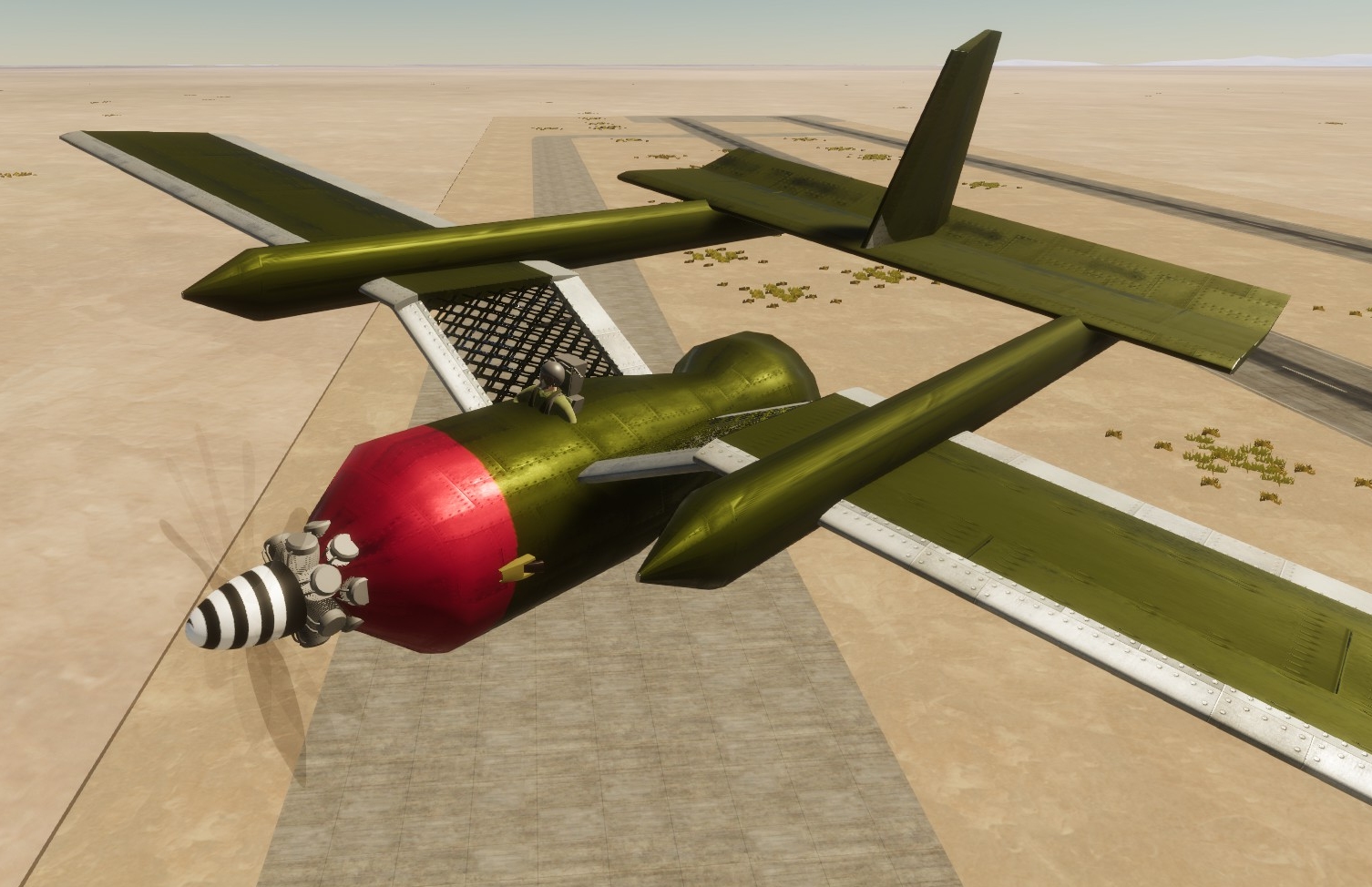
Perhaps I need to cut Marcel Bloch some slack. Flyout, a sophisticated DIY flight sim with a £17 Early Access price tag, demonstrates just how tricky it is to design aircraft that are both aerodynamically efficient and aesthetically pleasing.
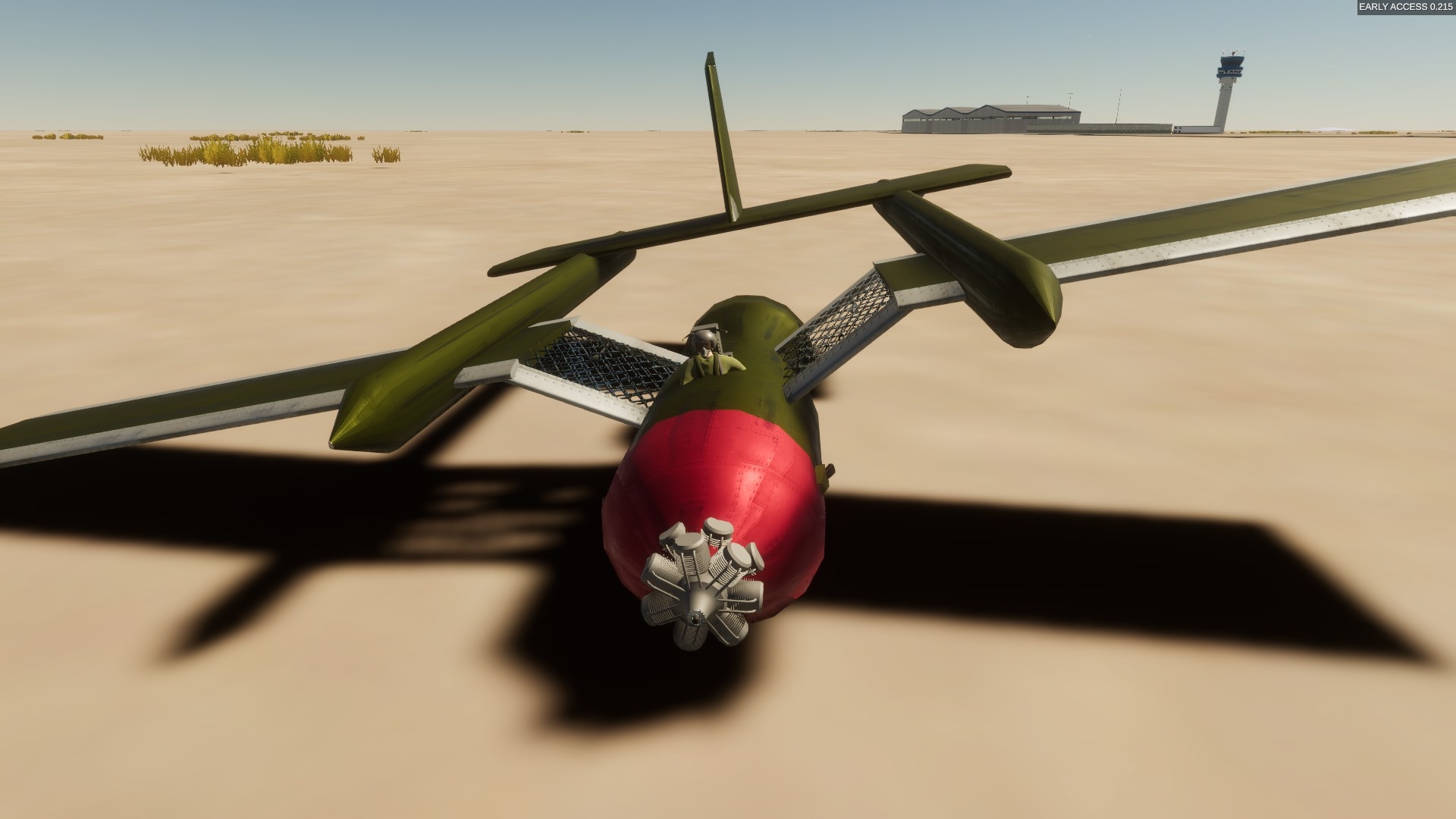
The monstrosity pictured above is the result of three hours of experimentation in Flyout’s seriously impressive editor. It was preceded by four or five other machines, most of which were equally uneasy on the eye. I’m particularly proud of ‘Tsar Bomba I’ as, thus far, it’s the only one of my scratchbuilt designs to feature a working engine.
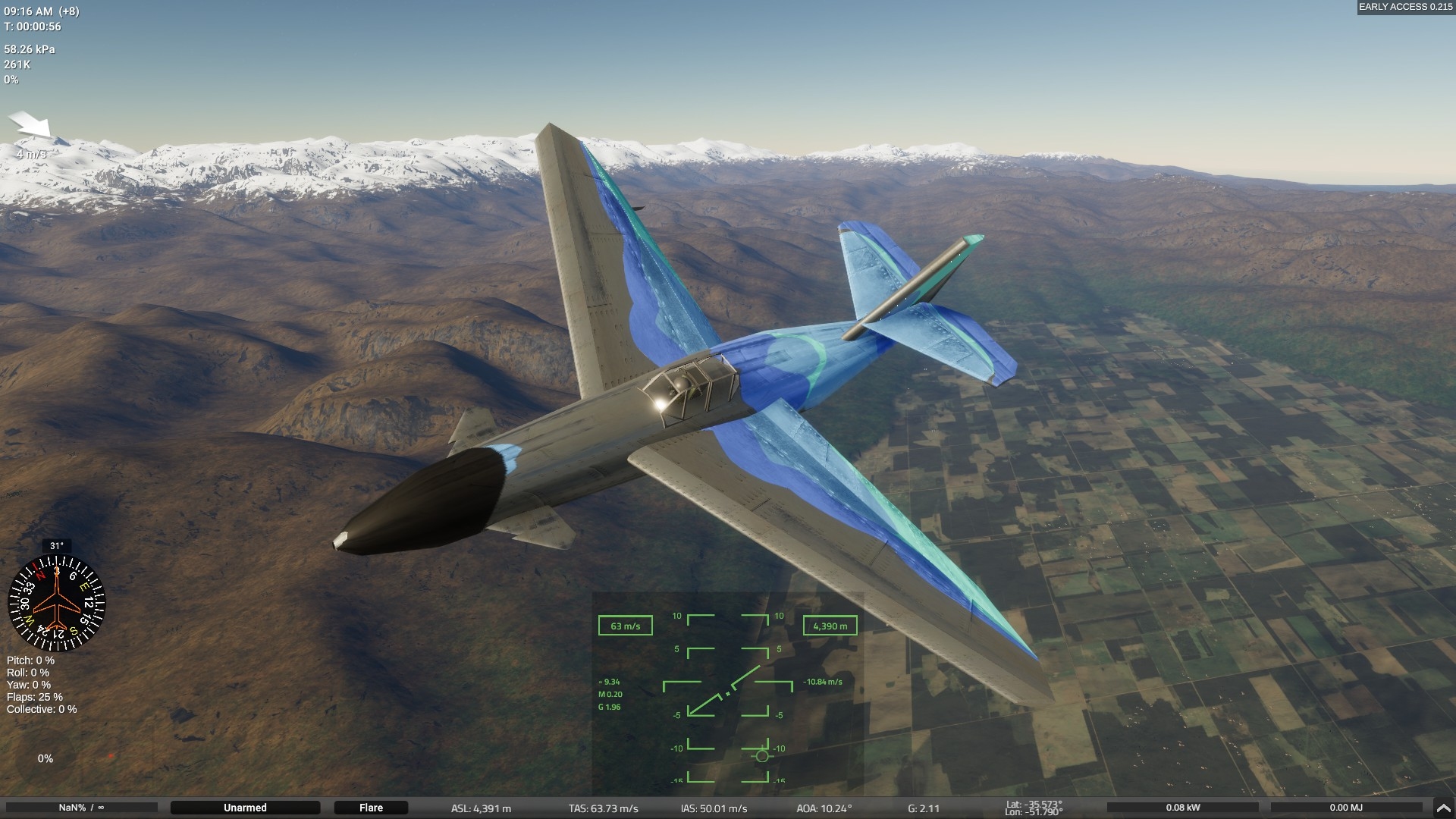
If you’ve ever used CAD software before, expect to be testflying homemade sailplanes inside your first hour. Wrap the polygonal pilot in a fuselage section, then extend, divide, and shape that section, add wings and a tailplane, and, hey presto, you’ve got yourself a glider.
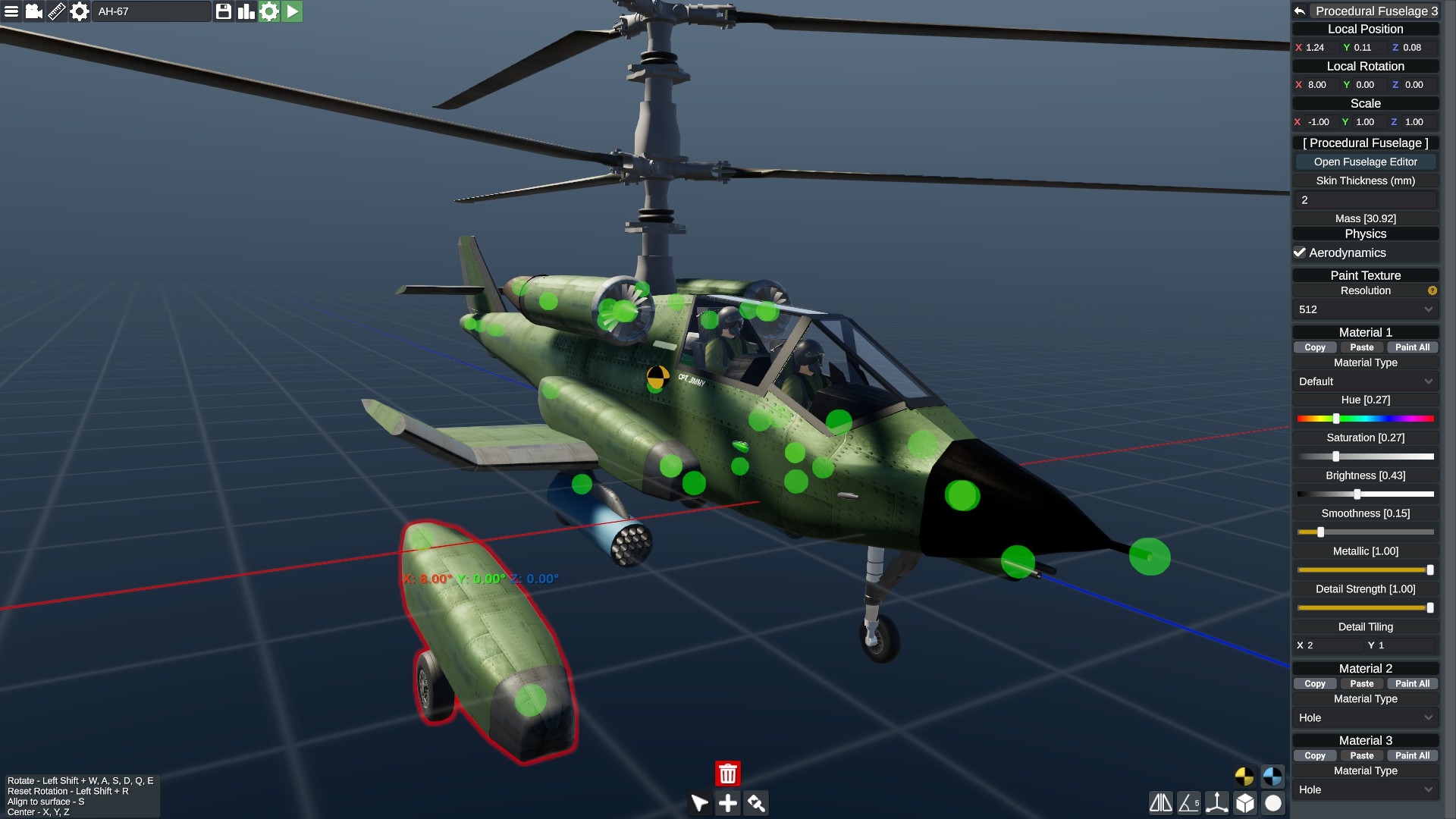
Everything from the fuselage and wing editors to the painting interface and component selector, is logically organised and reassuringly capable. Things only start getting intimidating when you decide the time has come to add engines.
As this video illustrates…
…propulsion systems aren’t simple self-contained entities. They are component combos that must be customised and configured to work together properly.
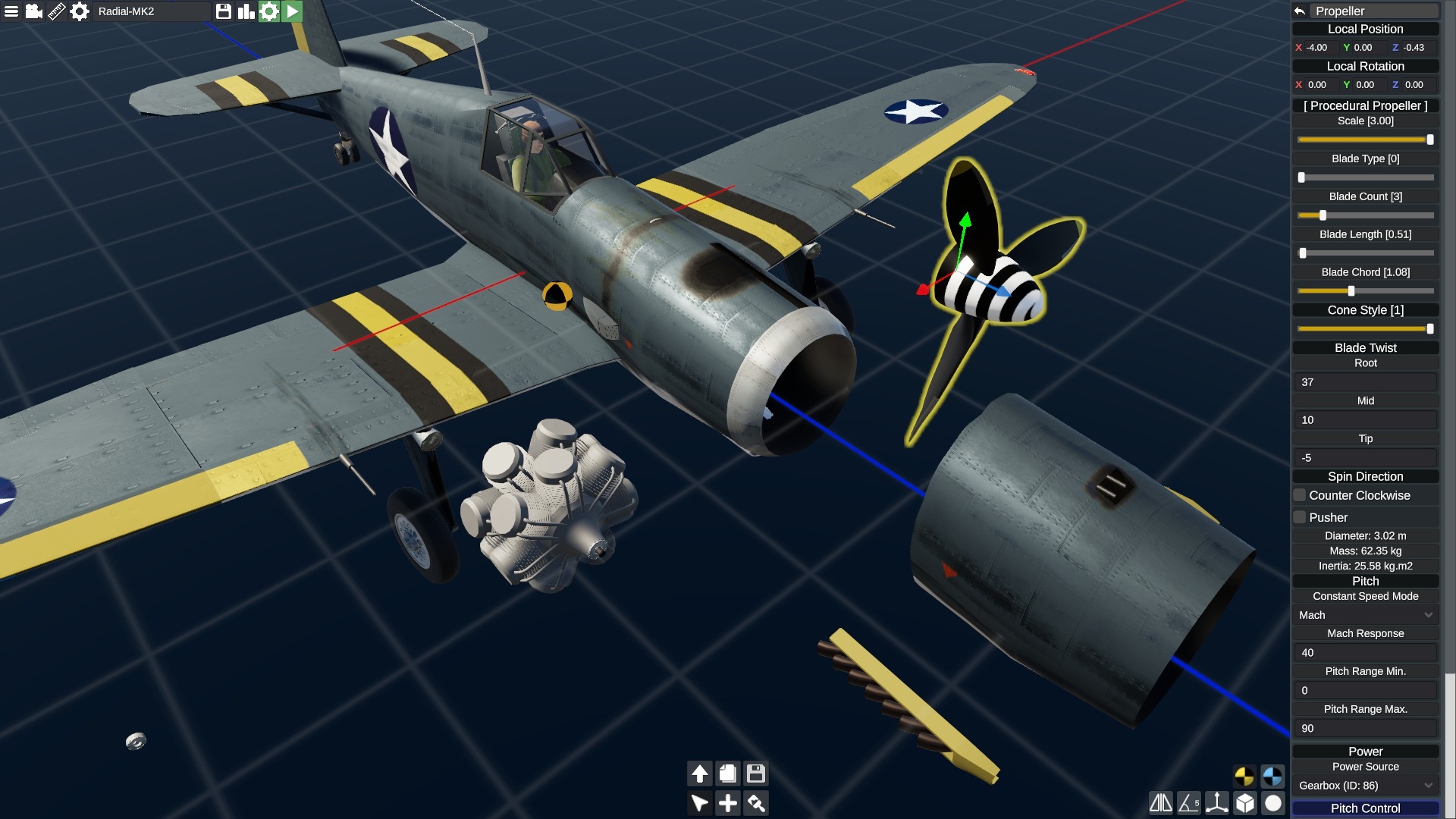
After trying and failing to create a working piston engine for the Tsar Bomba from scratch, I eventually resorted to stealing relevant parts from one of the game’s four prefabricated aircraft.
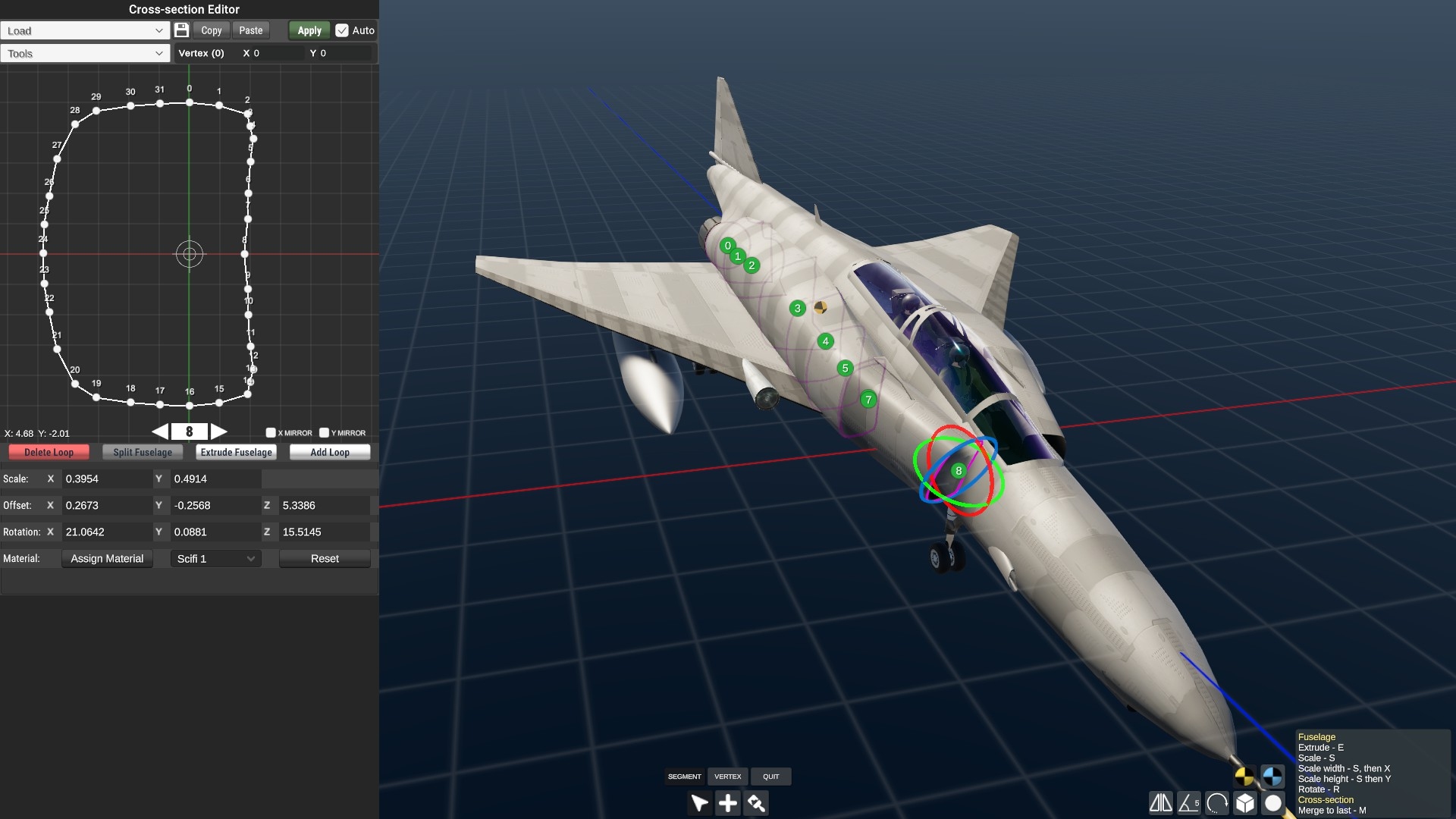
In a sense, this quartet of fictional flyables functions as the sim’s tutorial sequence at the moment. By tweaking, studying, and disassembling them, newcomers can gain knowledge, experience, and confidence.
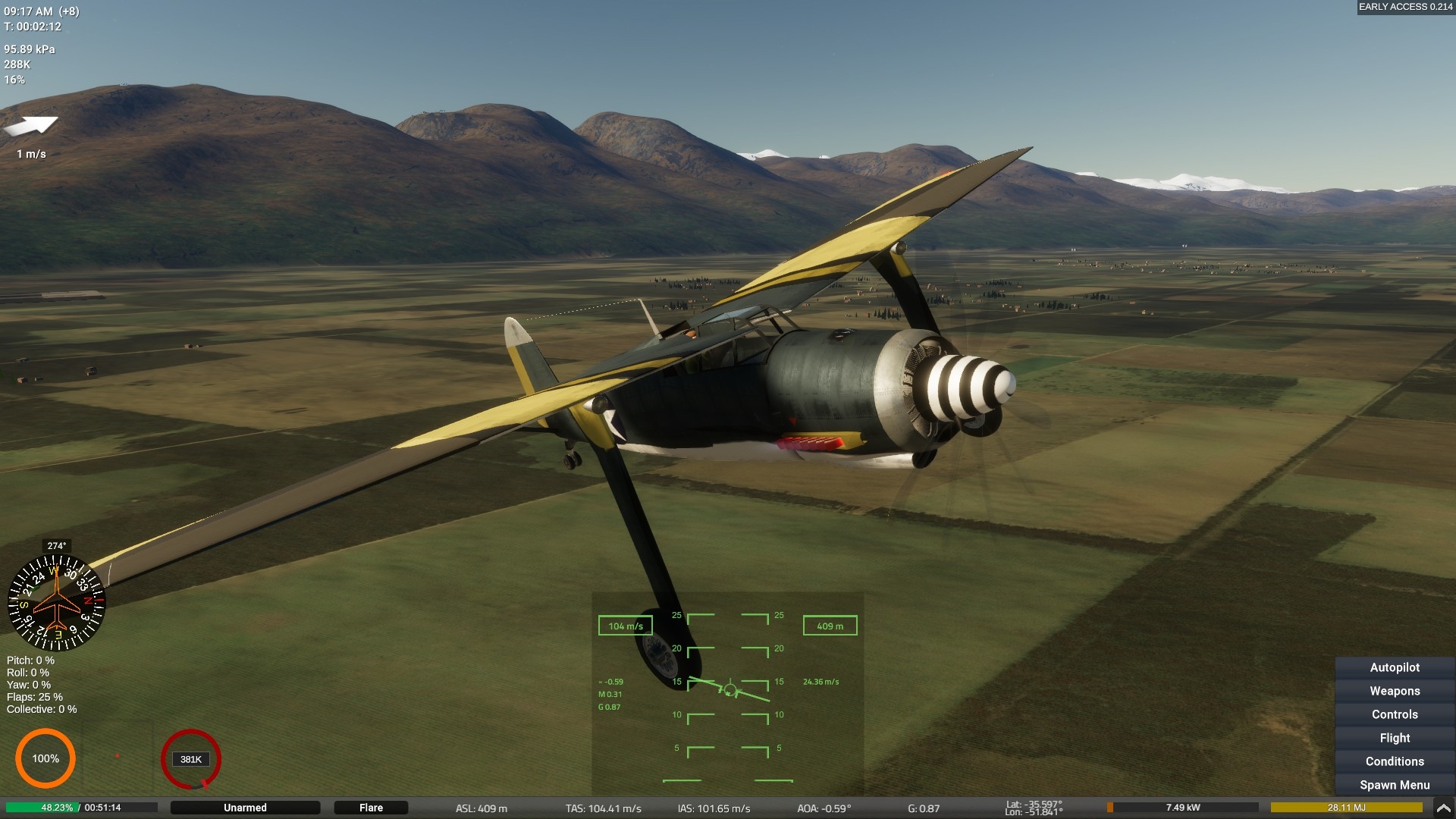
The result of my very first editor foray was a passable STOL variant of the ‘Radial Mk 2’.
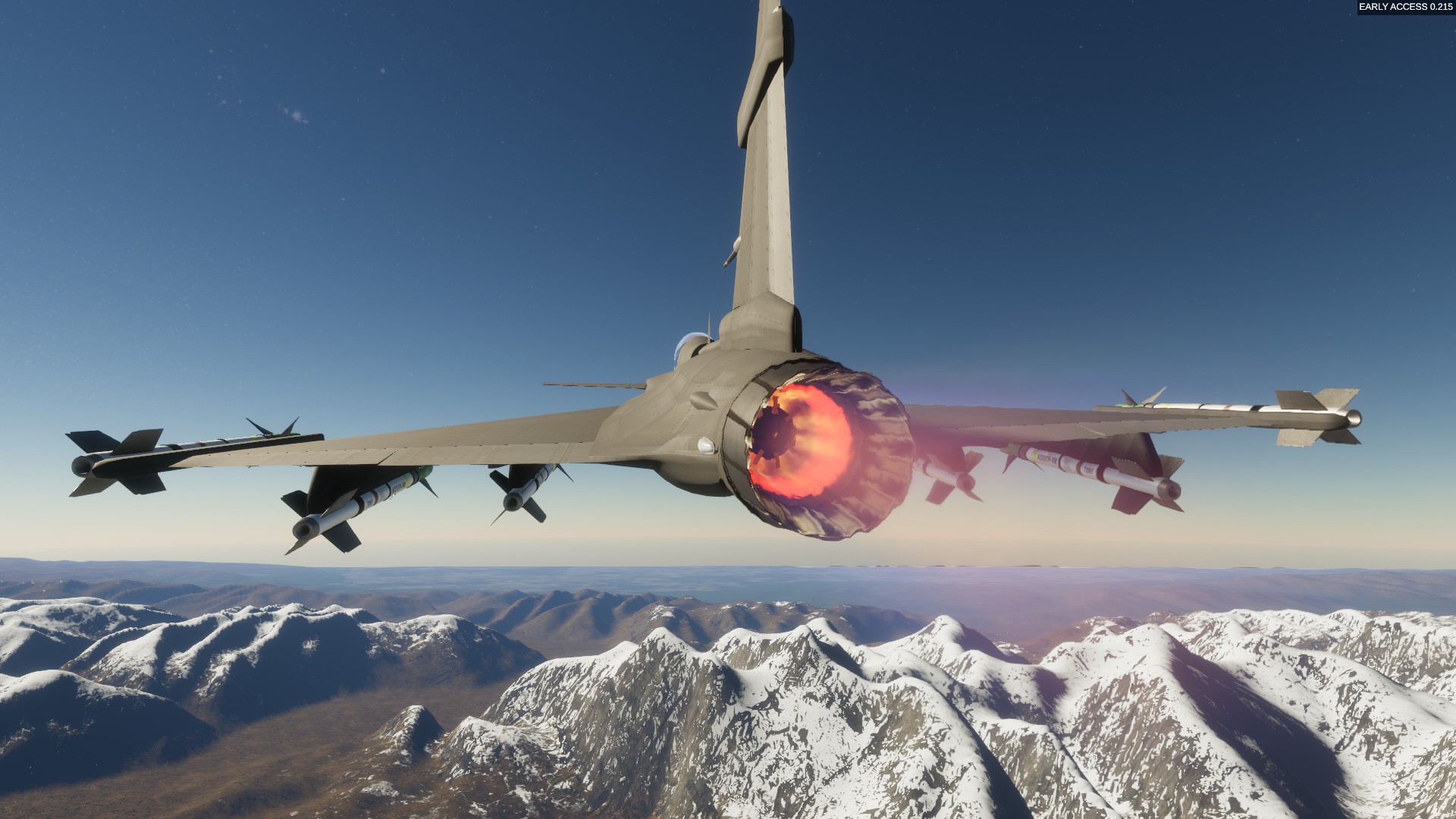
Naturally, every component added to or removed from a design, and every change made to a fuselage or flight surface, has aerodynamic consequences. Although the game is currently pure sandbox, it’s not hard to picture a future build incorporating mission-style challenges. Fashion a flying machine able to land on the deck of this dinky aircraft carrier… Build a warbird sufficiently manoeuvrable and well-armed to take down this target drone or tank* … Construct an aerodyne capable of flying from here to here on just five litres of avgas… the challenges almost write themselves.
* Targets can be spawned at will for weapon testing purposes
While a few structured activities would be great, arguably what the utterly absorbing Flyout needs most right now is Steam Workshop integration. Talented users have already fabricated some amazing facsimiles and fictional designs and it would be grand to be able to browse and install these creations at the touch of a button.
* * *
TramSim Vienna
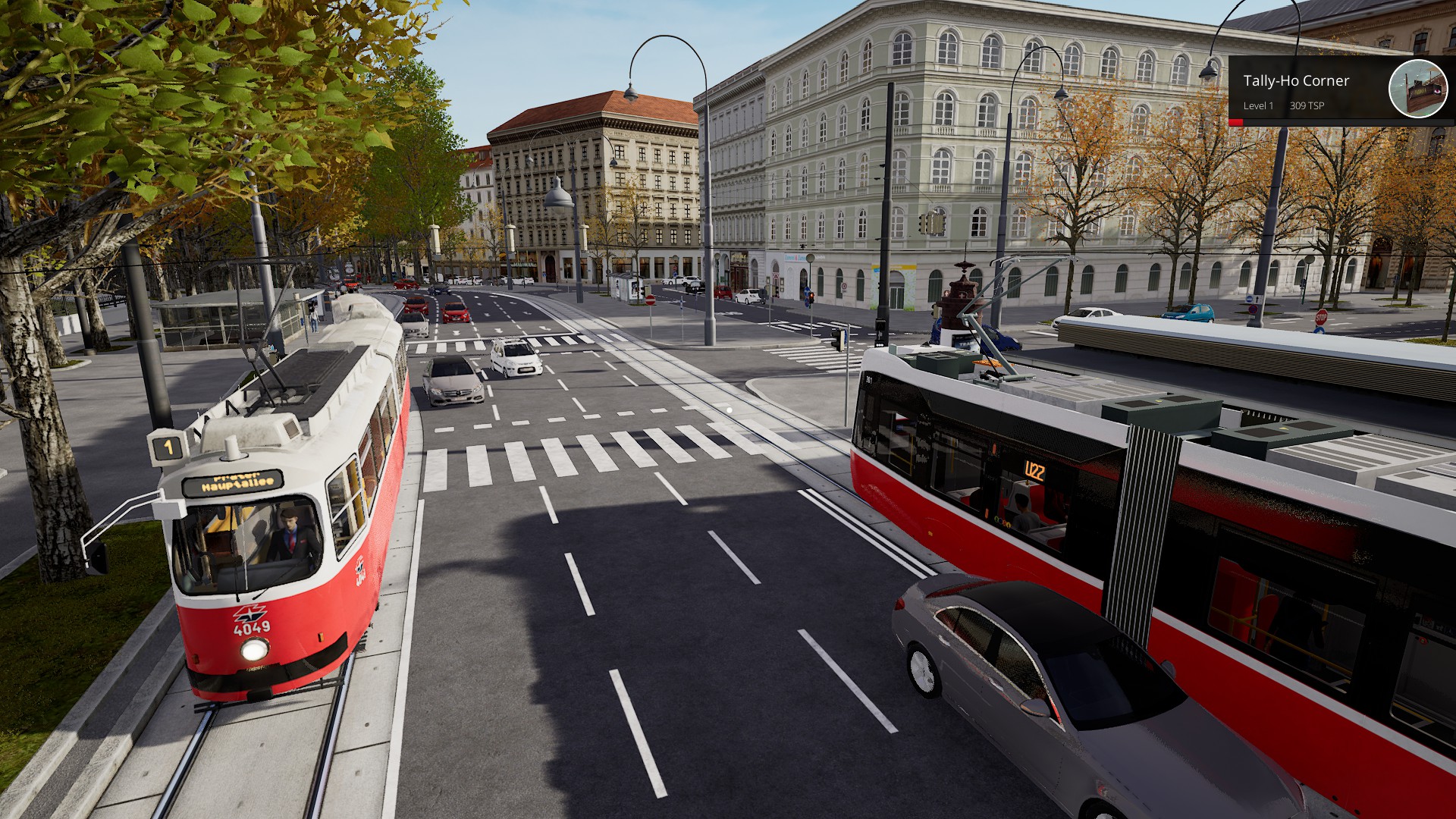
TramSim Vienna is the proud owner of “- The Tram Simulator”, probably the most superfluous subtitle on Steam. It’s also likeable, half-price until Tuesday, and guaranteed to blur the fans on your 3D card if played at high graphics settings. Ada, my new PC, coped admirably for most of the 180-minute playtest, but now and again a particular combination of sun position, street alignment, and tree density (Vienna boasts some lovely tree-lined boulevards) fractured fluency in a big way.
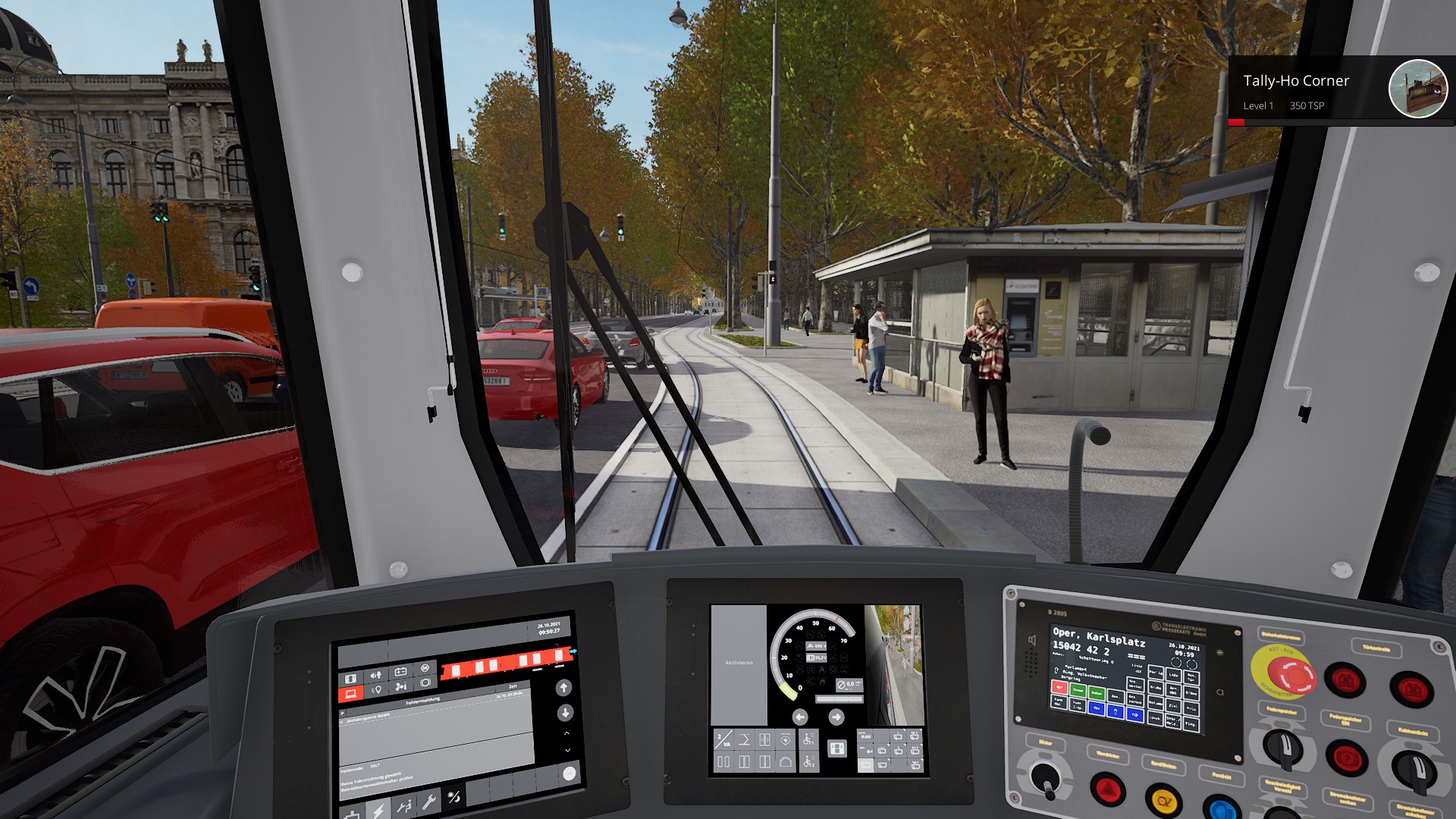
Coming to TramSim direct from Simt Simulator, it’s hard not to gawp at the stuff keen to stress your GPU. The game’s combination of grandiose urban architecture (numerous landmarks are lovingly reproduced), profuse shadows, and busy pavements, roads, and tram interiors, makes for some incredibly immersive passages of play. True, occasionally those passages are rudely terminated by trams with missing sections, and pedestrians jostling idiotically at zebra crossings, or wading waist-deep in tarmac, but overlook these rare glitches and ViewApp have done a marvellous job of recreating their home city and its pantographed people carriers.
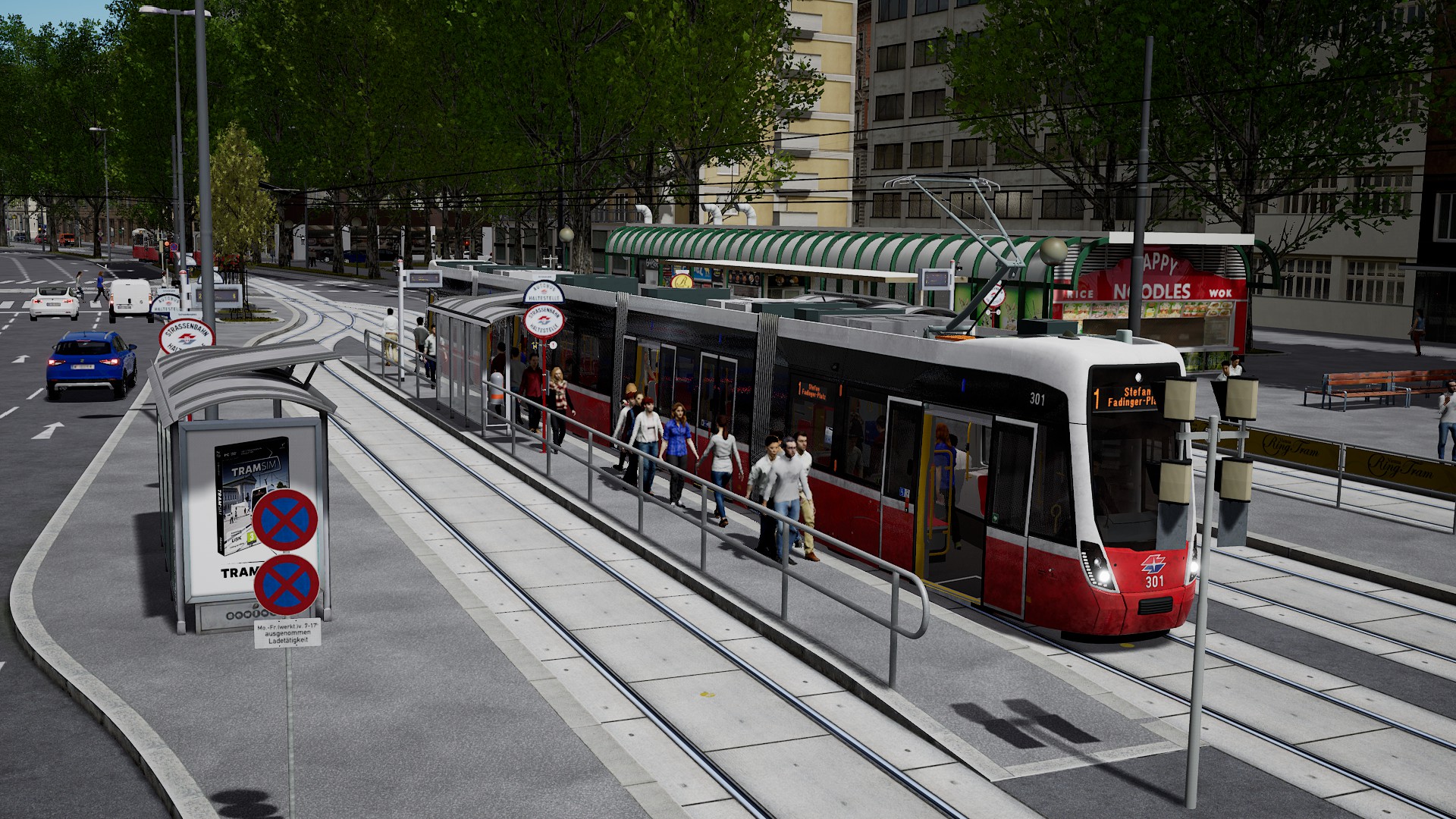
While the real Bombardier Flexity may well have endearing qualities, its digital doppleganger doesn’t exactly ooze personality. Whisper-quiet and silky smooth compared to the elderly Czech trams that were my bosom buddies last week, it’s not a vehicle that will lift the hairs on the back of your neck, or leave you grinning from lughole to lughole.
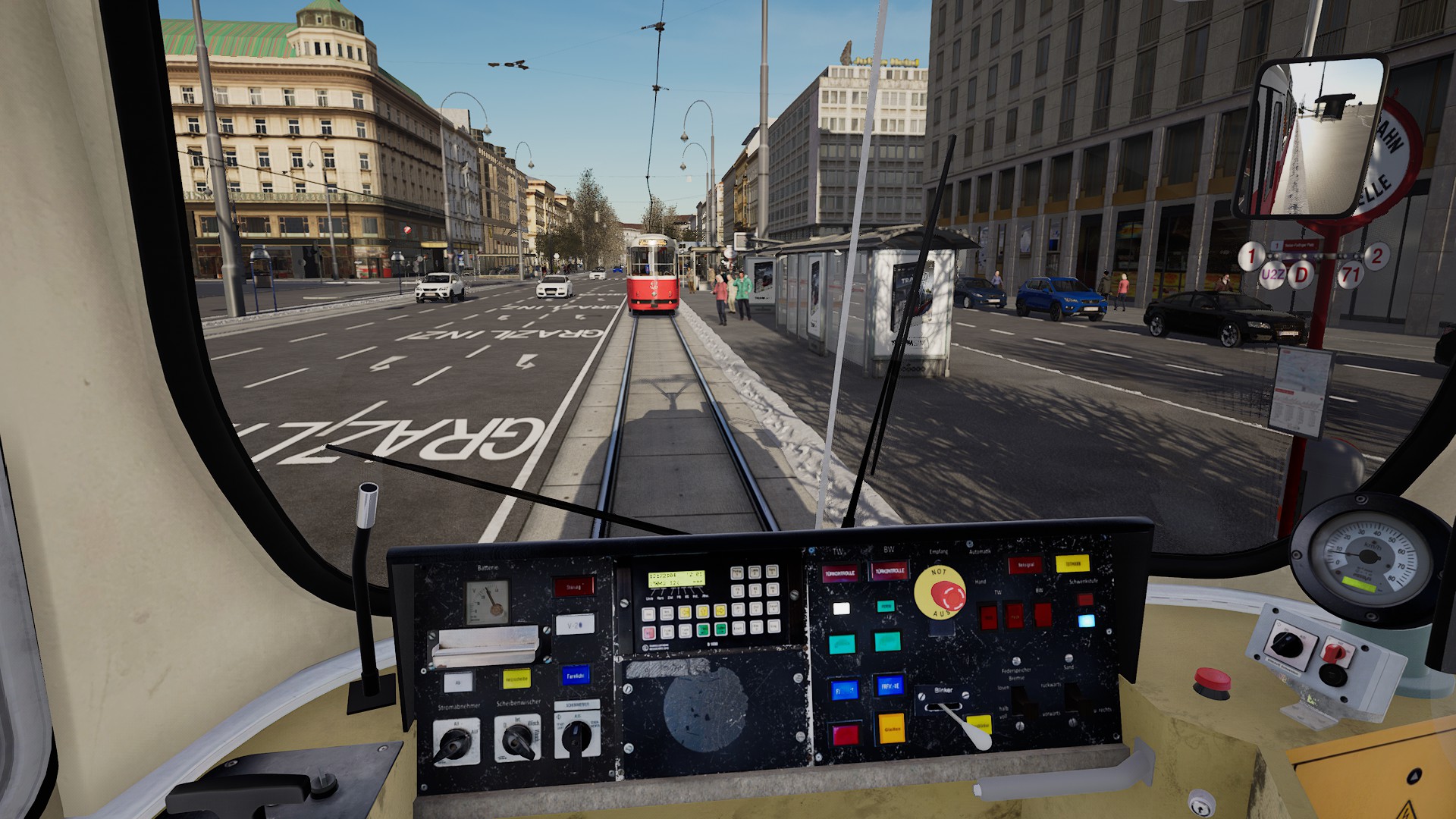
Fairly late in my session I discovered the E2, an older, less refined alternative, and we bonded like that (I just clicked my fingers). Although TramSim’s trundlers aren’t quite as vocal as Simt’s, and a few of their sound effects have distracting rough edges, sitting in the prow of an E2 as it rumbles and whines along central Wien’s seven-mile-long Line 1, that fifteen quid feels like money well spent.
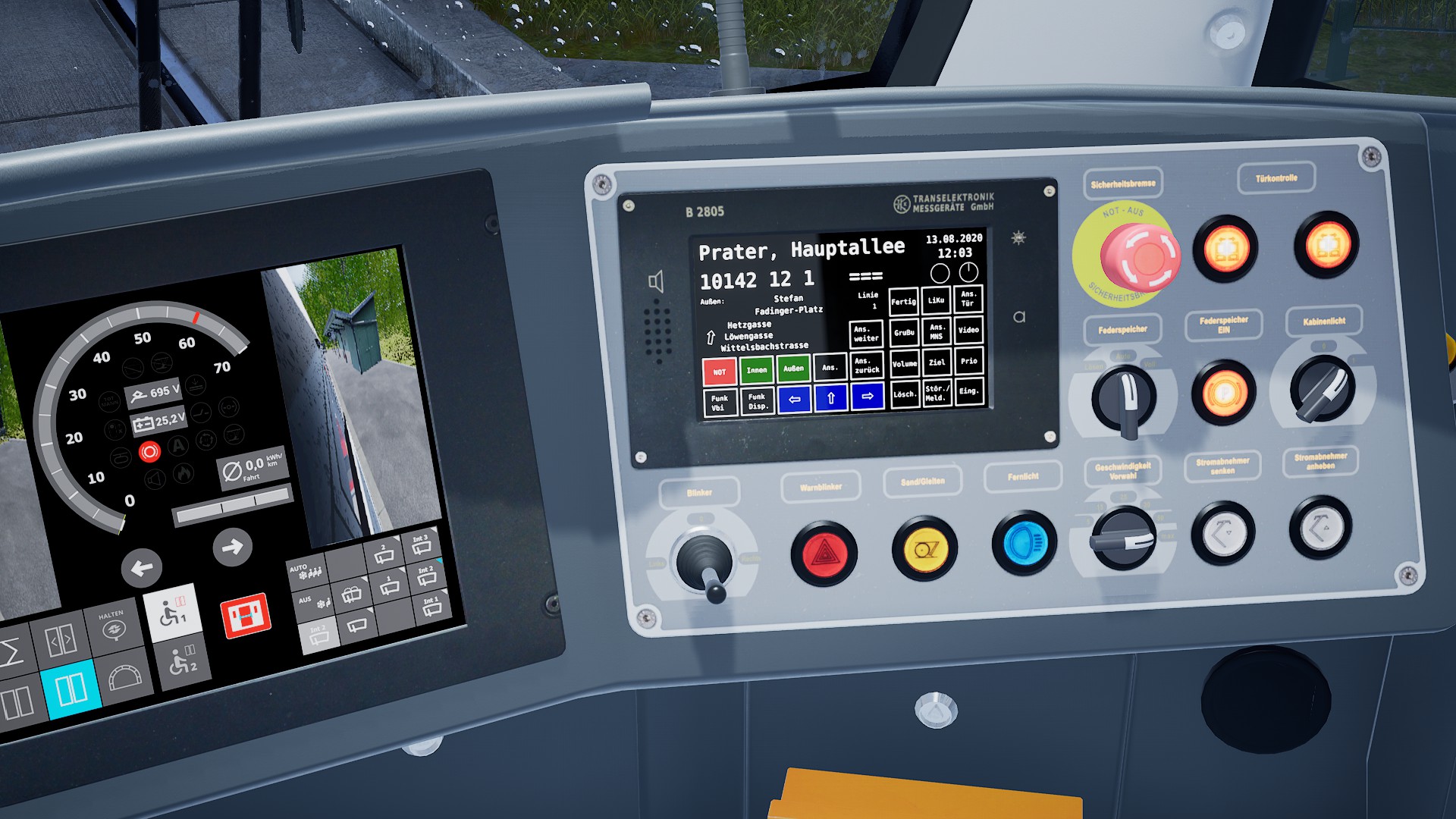
The E2 and Flexity both come with dashboards studded with clickable buttons and knobs. As I discovered during my first proper drive, the brief tutorials only cover the easily grasped basics.
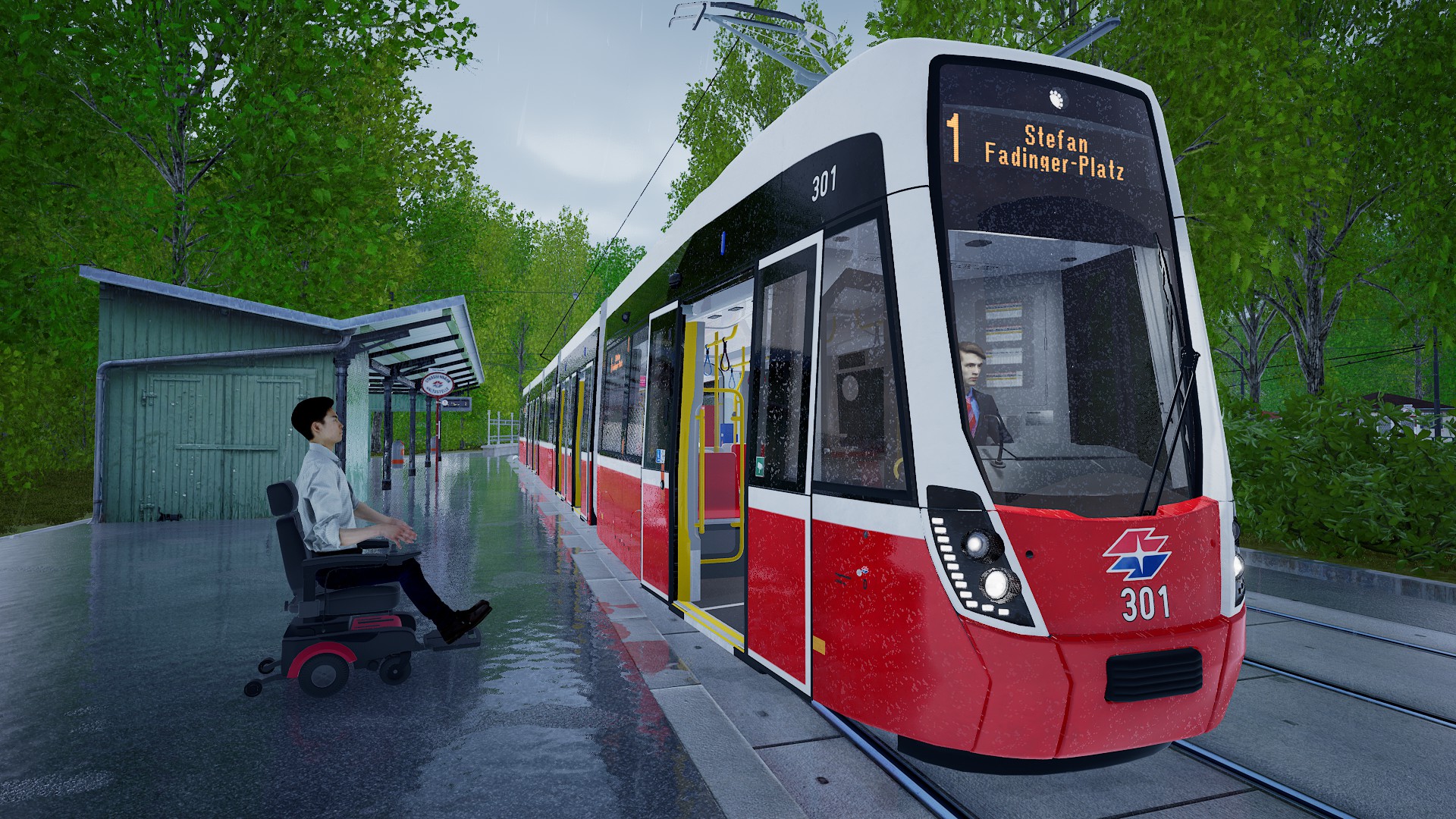
Apologies to the bloke in the electric wheelchair who I left in the rain at Prater Hauptallee! After five minutes of fruitless button pushing and key list scrutiny, I felt I had no option but to admit defeat and depart. Now I understand the mysteries of ramp deployment I promise it won’t happen again.
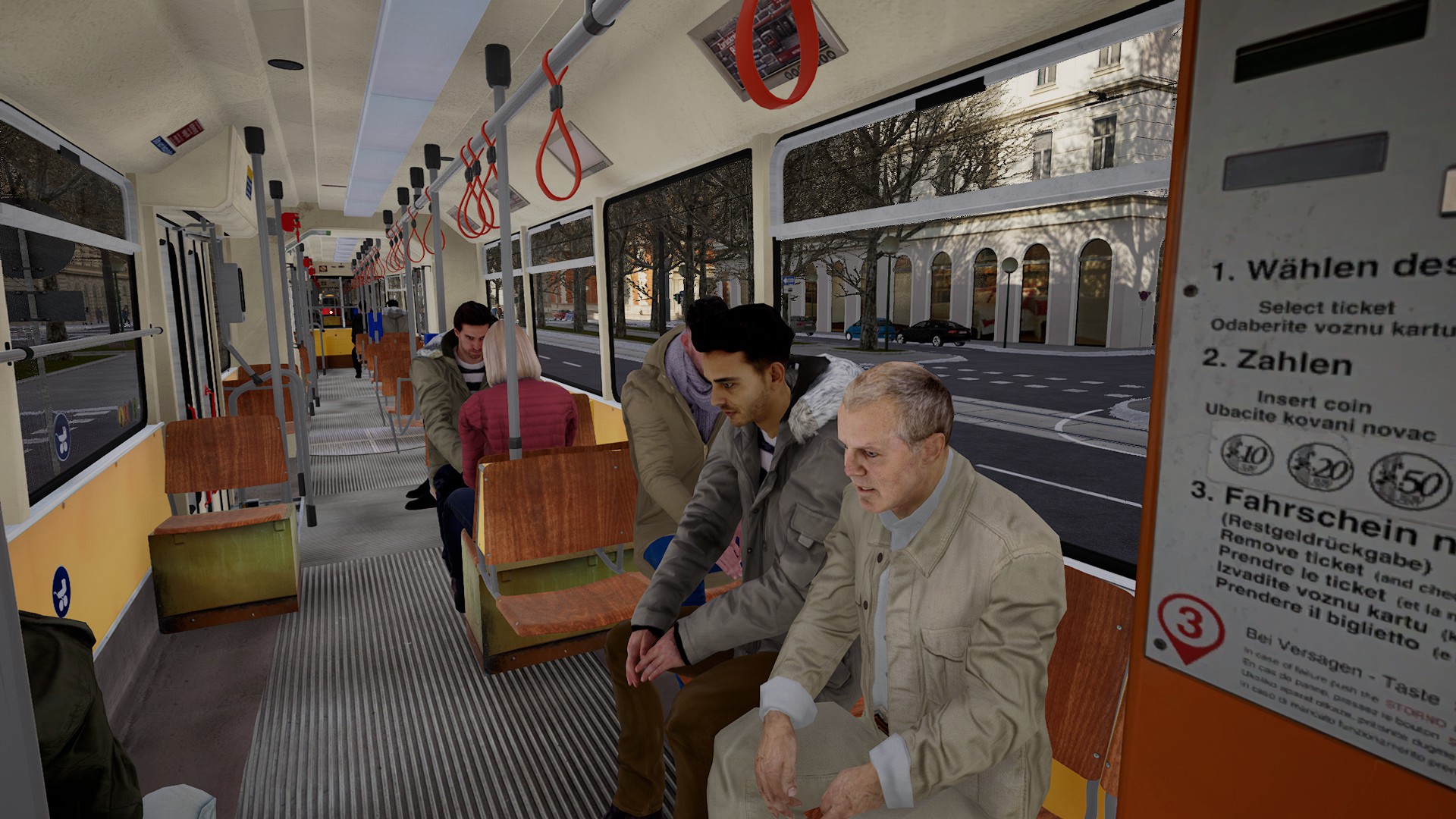
You can miss stops, run red lights, and wind-up wheelchair users all you like during sessions. Even slamming full-tilt into the tram ahead only elicits a halfhearted pop-up rebuke. I like my transport sims lenient, but probably would have ticked a “judgemental passengers” and a “derailments” tickbox had they been available.
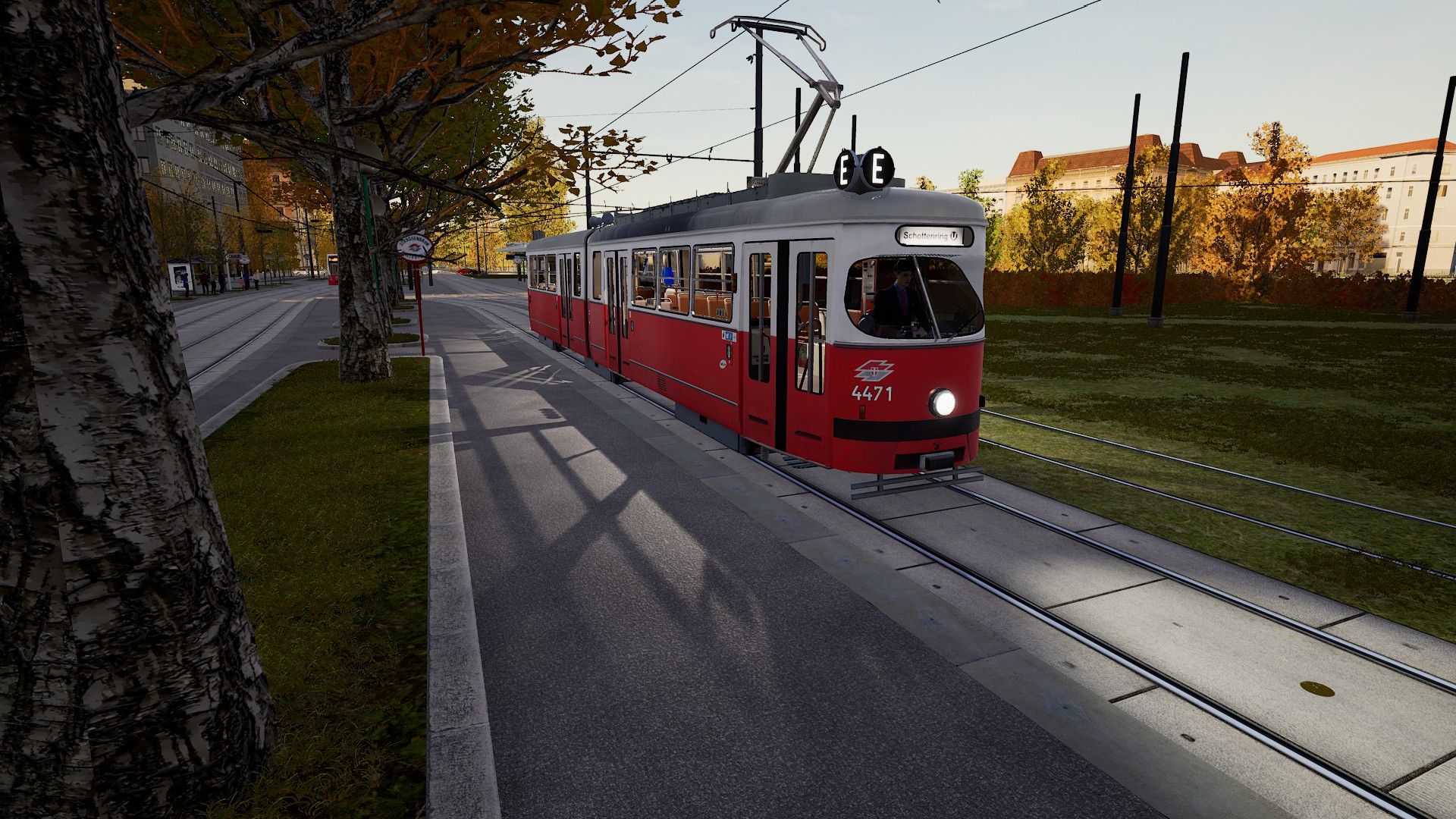
How soon I hurry back to Simt will depend on what I find when I try this £10 add-on. Judging by the Steam reviews, accurately simmed Sixties tech ensures TramSim’s E1s are every bit as quirky and demanding as their prototypes.
* * *
Beyond Sunset
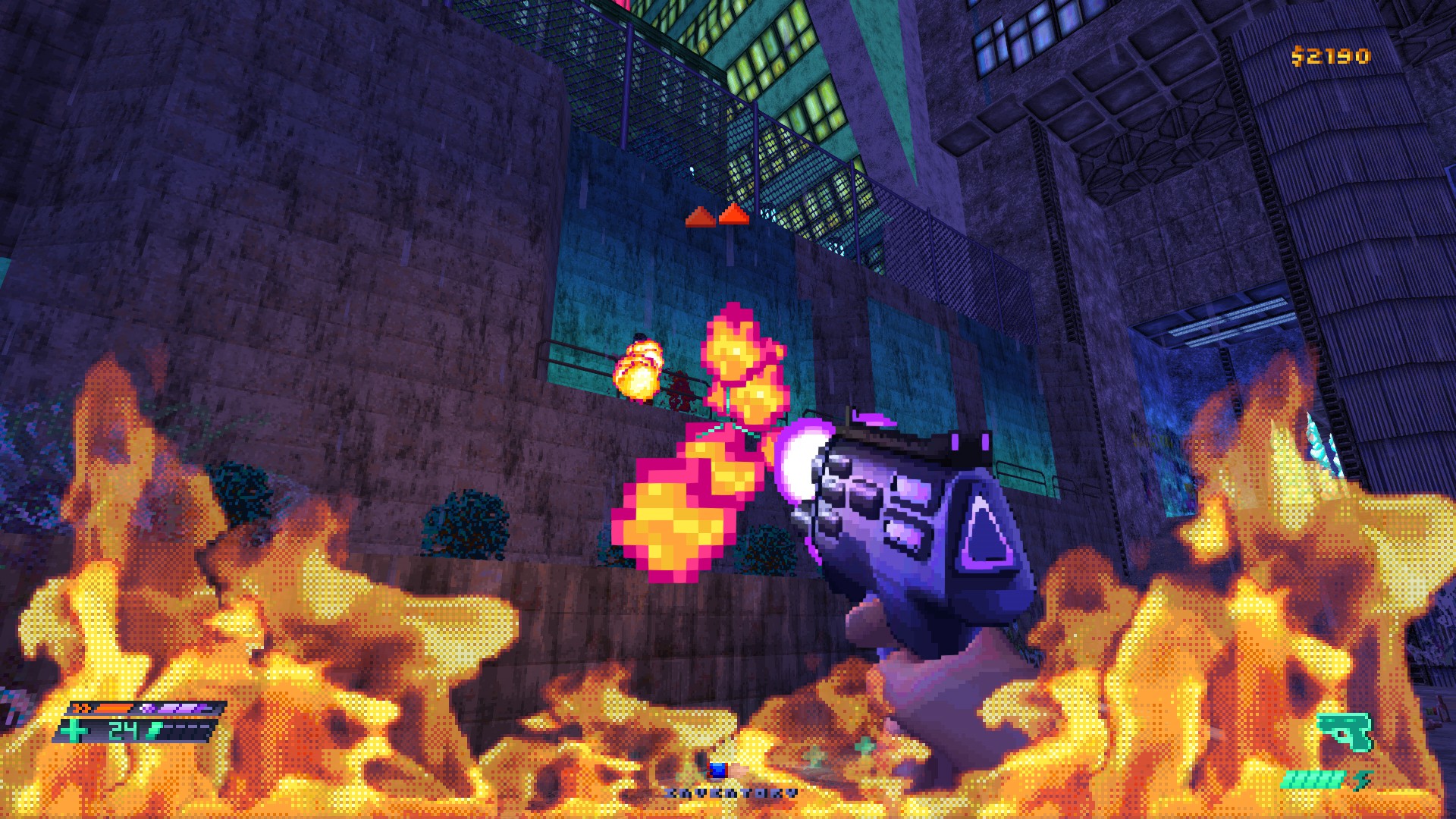
I can’t remember an FPS ever making me wait 120 blooming minutes for a boomstick before. Released a couple of weeks ago, the demo-blessed Beyond Sunset (£8.50) dangles Deux Ex-esque depth and pace early on, but quickly reveals itself to be a fairly frantic and shallow Doom-like at heart.
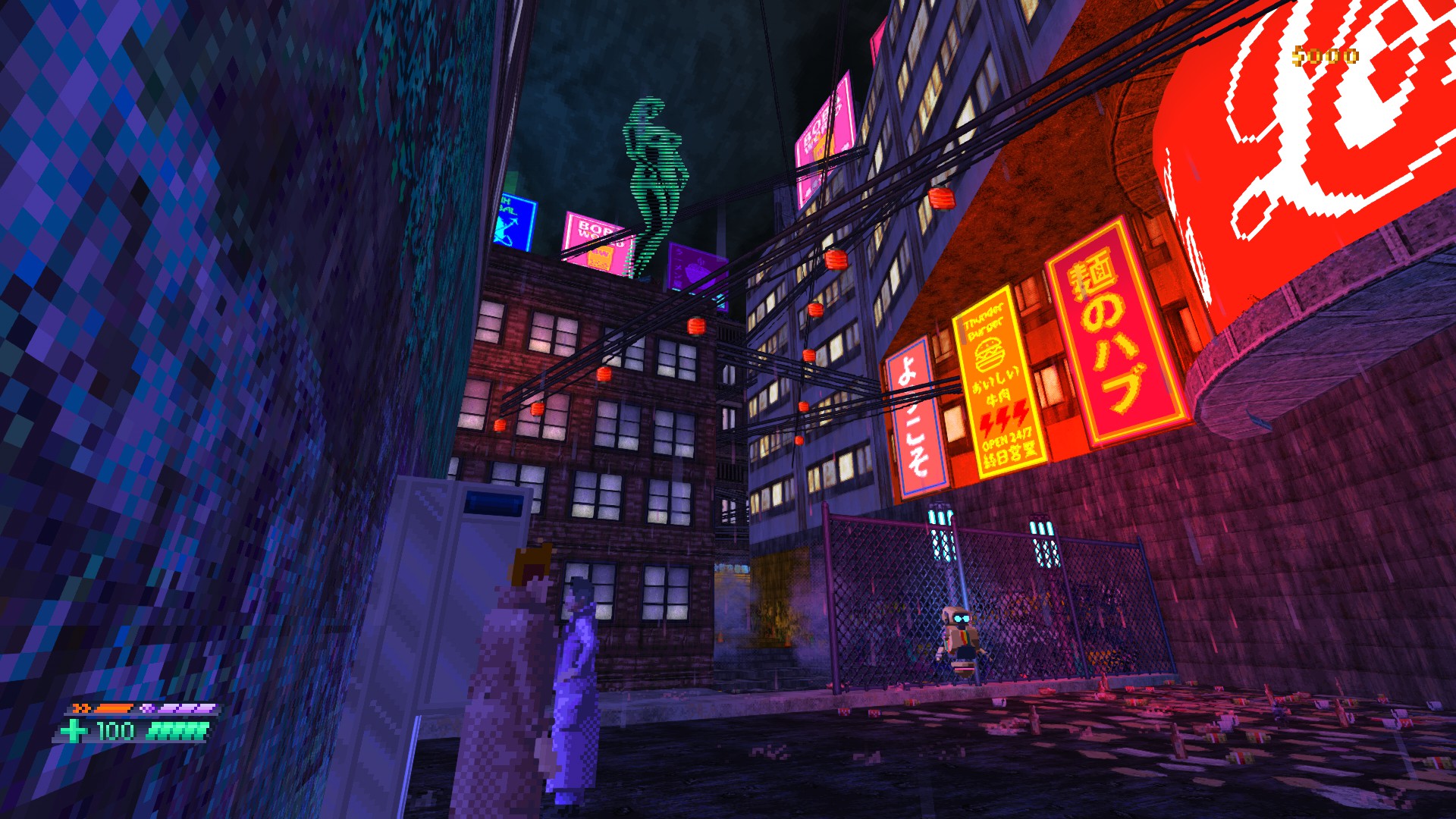
Meeting the hero, a ‘street samurai’ called Raven… exploring an atmospheric level hub awash with rainwater, litter, neon, and talkative strangers… accepting my first job from the friendly neighbourhood pawnbroker… I loved the initial thirty minutes.
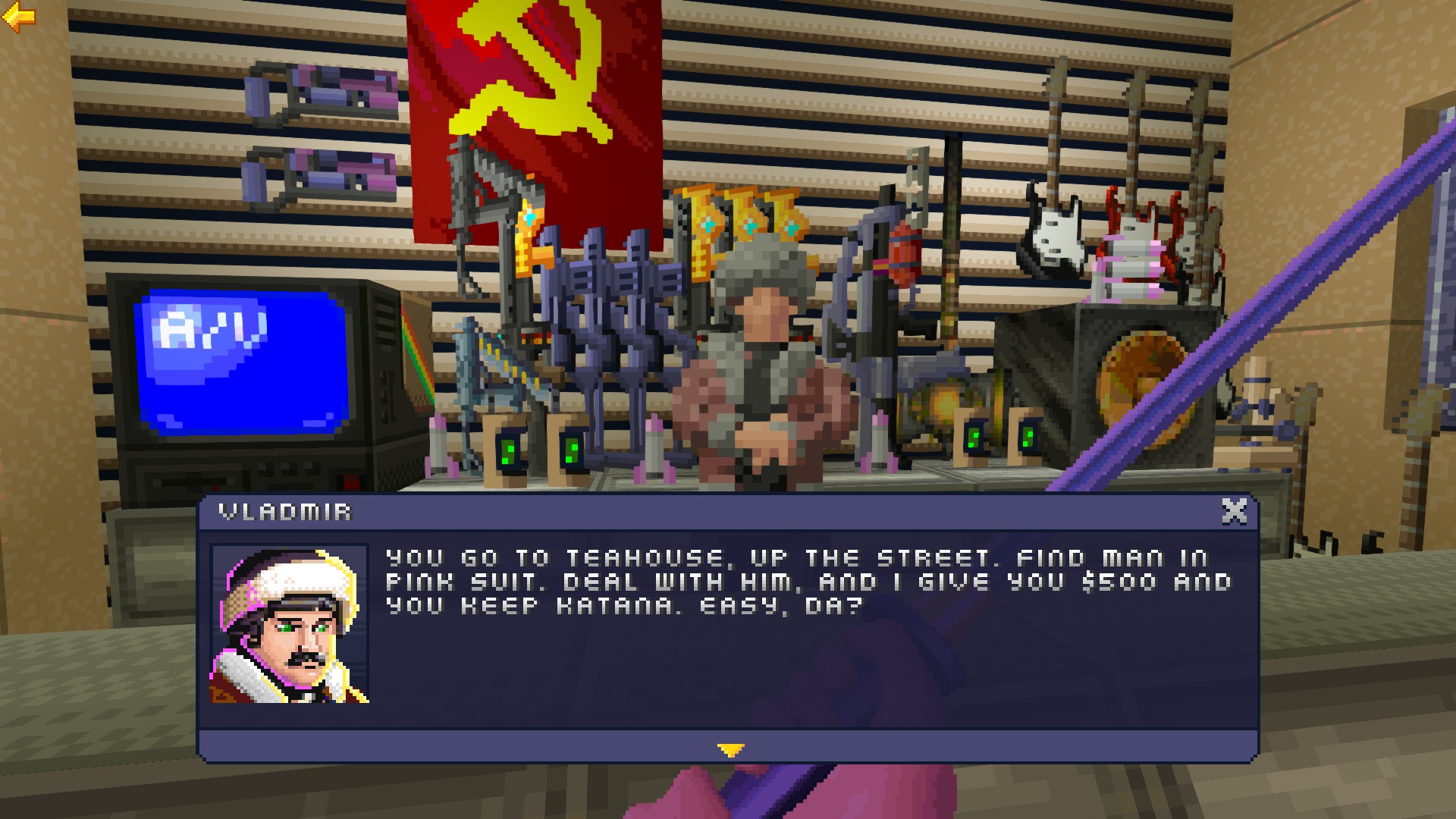
However, by the end of hour one, the novelty of katana-ing the same couple of predictable enemy types over and over again was beginning to wear off. I was itching for new foes and kill kit, and some combat-free challenges. I was yearning for more RPGing and better battle odds.
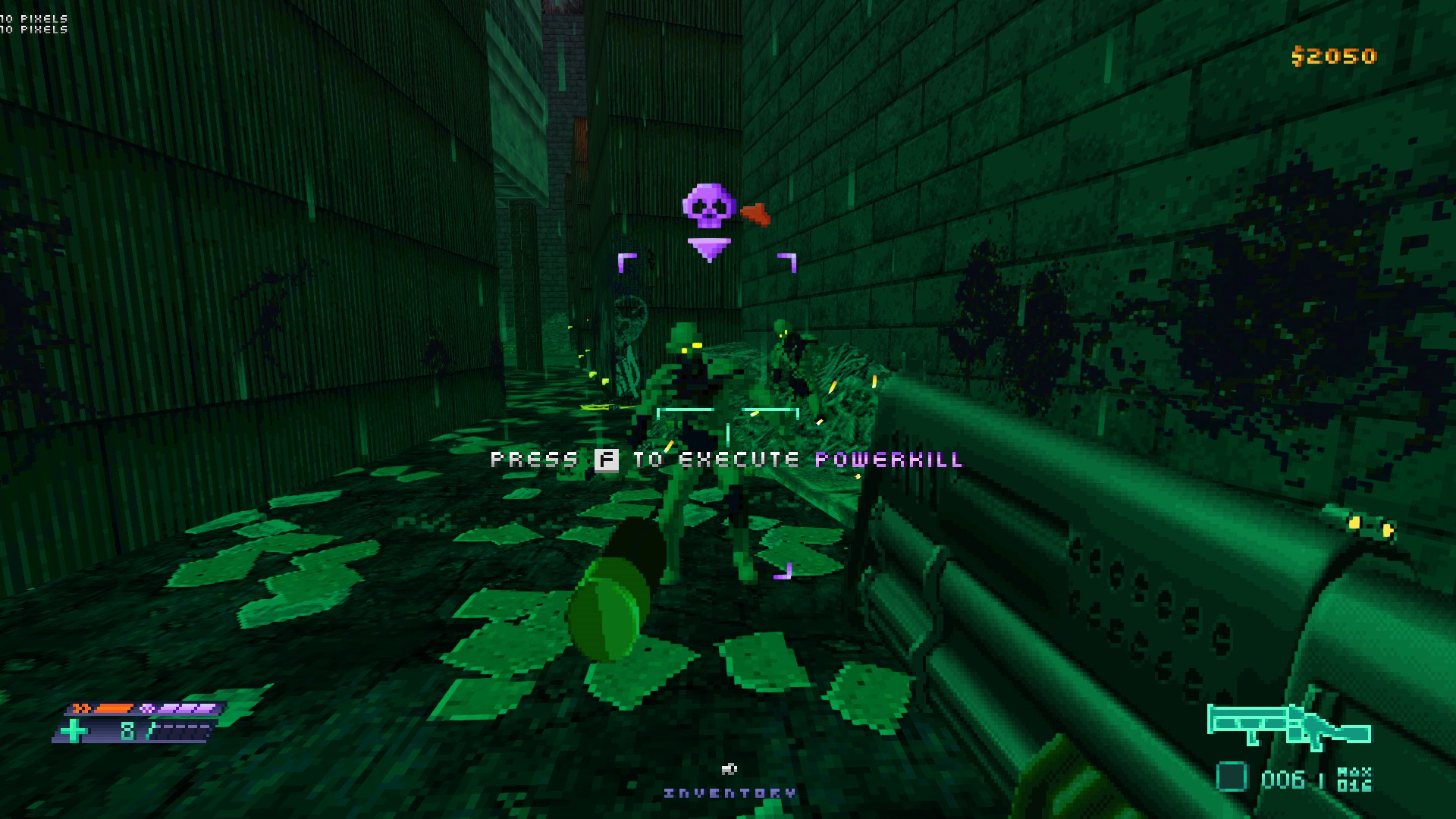
I probably should have restarted at a lower difficulty at that point. However, bloody-mindedness and pride (I’ve never played an FPS on a difficulty setting lower than ‘medium’ and don’t intend to start now!) caused me to press on. Two hours and numerous quickloads later, I was a bit better armed and had encountered some slightly more engaging opponents, but feelings of weariness and disorientation were growing and beginning to sap my resolve.
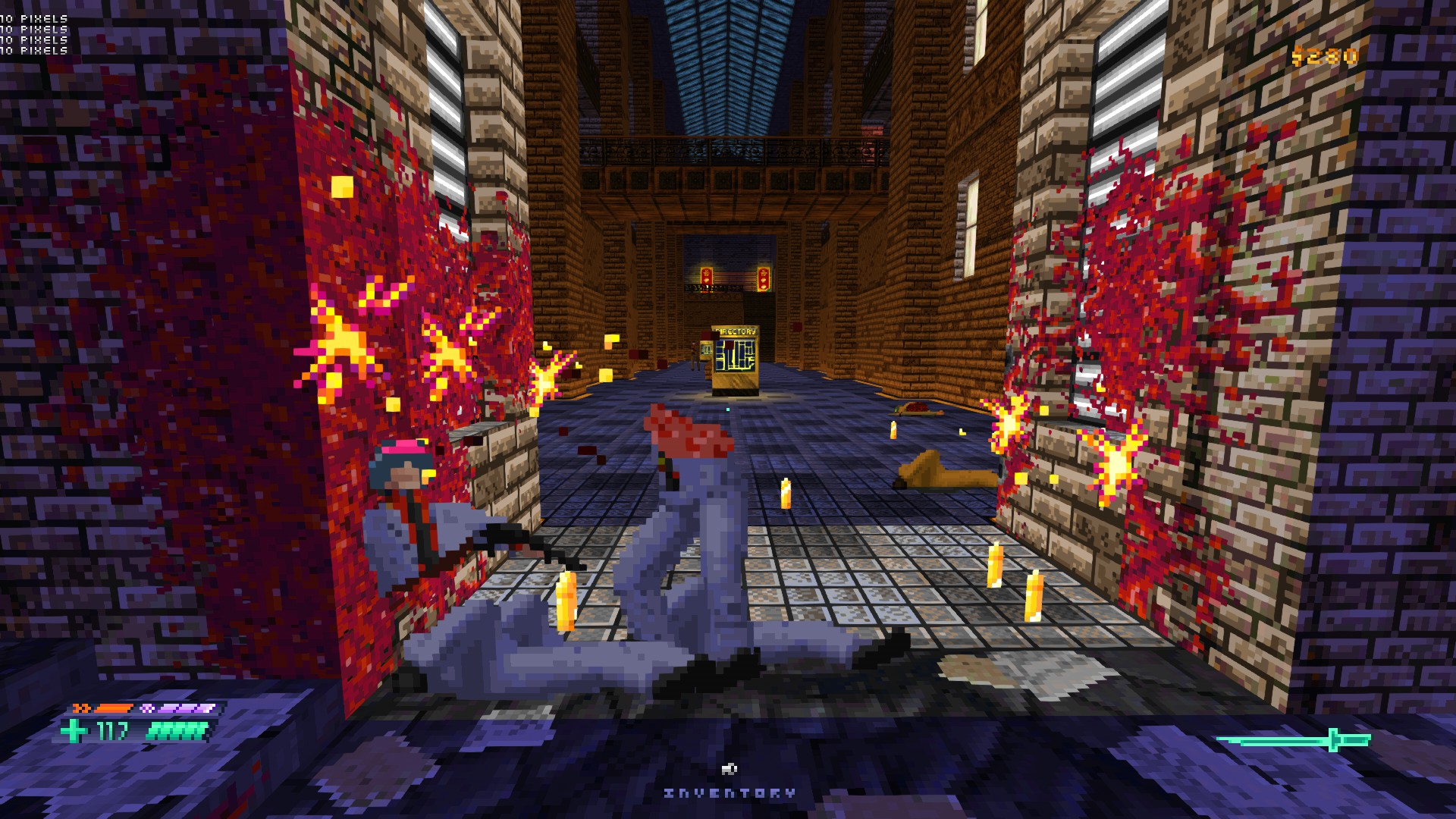
Forcing players to use a single melee weapon for so long wouldn’t be a problem if said weapon was a hoot to use. On paper, the katana with its secondary abilities to deflect gunfire and perform lethal close-quarters ‘powerkills’, sounds great. In practise, improbable range, repetitive kill animations, crude enemy AI, and the blade’s lack of physicality, meant – for me at least – swordplay quickly lost its shine.
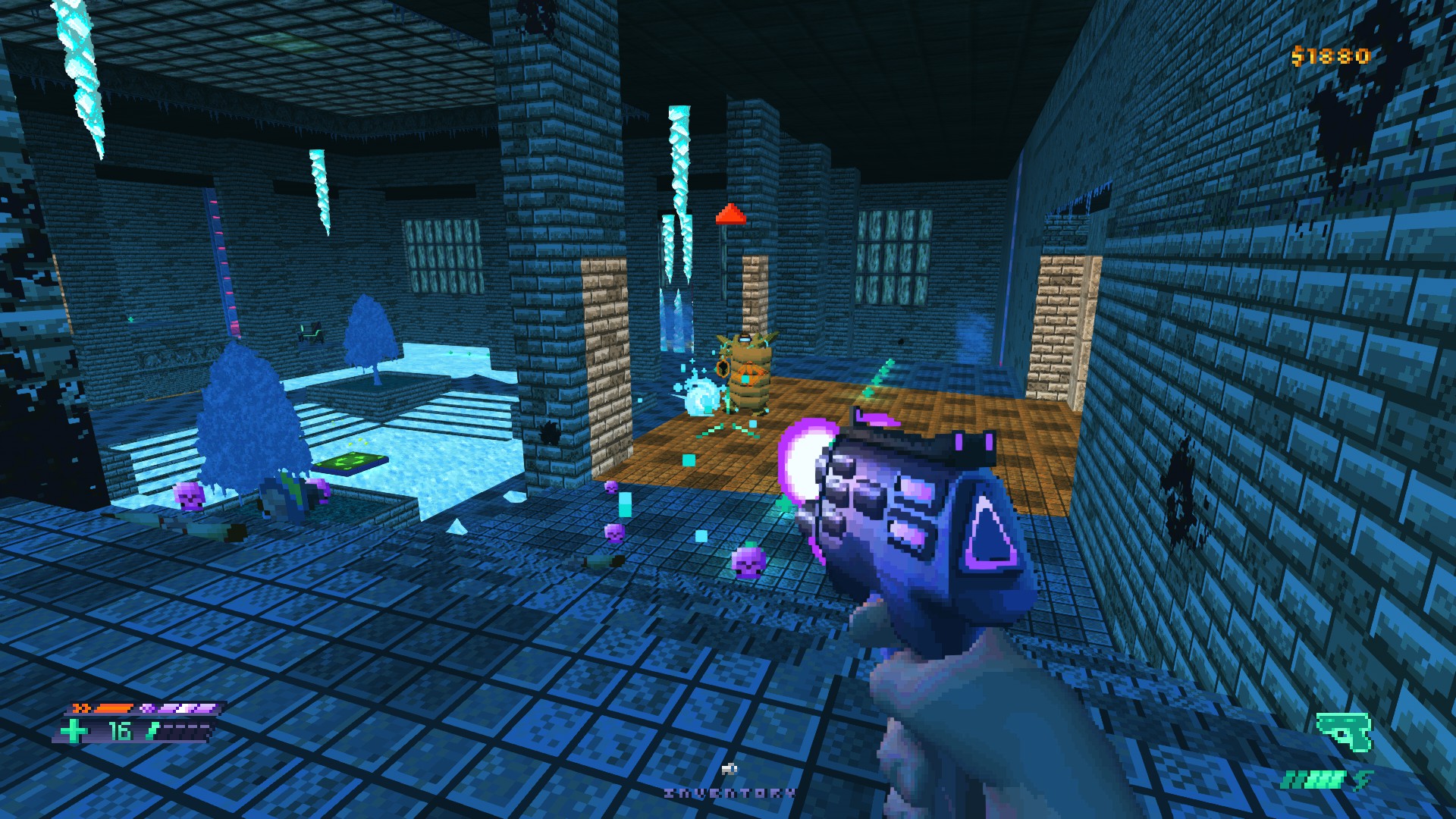
Because the level designer seems fond of big arena-like spaces and the first two weapons dished out are that samurai slicer and a pistol that fires a rather sluggish plasma bolt, I spent most of yesterday evening waiting behind pillars for approaching enemies, firing ineffectually at distant sprites, or desperately dashing between knots of hostiles. At times, the combination of level design, enemy placement, and weapon abilities, made for entertaining mayhem. Often, sadly, the only thing it produced was frustration.
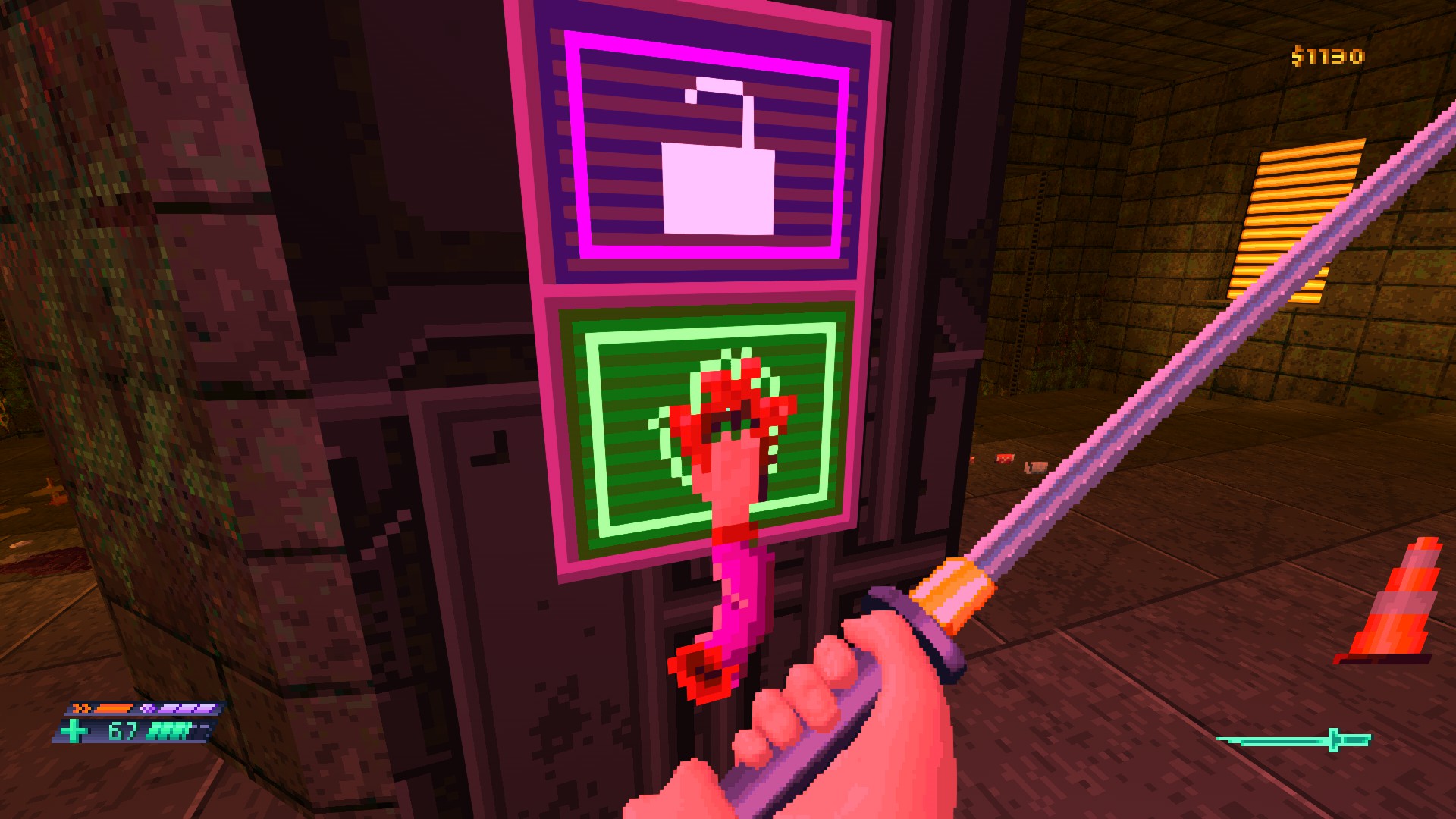
Right now I’m not sure whether Beyond Sunset’s fab cyberpunk ambience and dashes of dark humour (see above) are adequate compensation for its slightly dull foes and aggravating aggro. HROT, Strafe, Dusk, Zortch, Supplice, Disdain, Incision… there are so many good replay-ripe retro shooters in my Steam library, it seems perverse to persevere with this one.

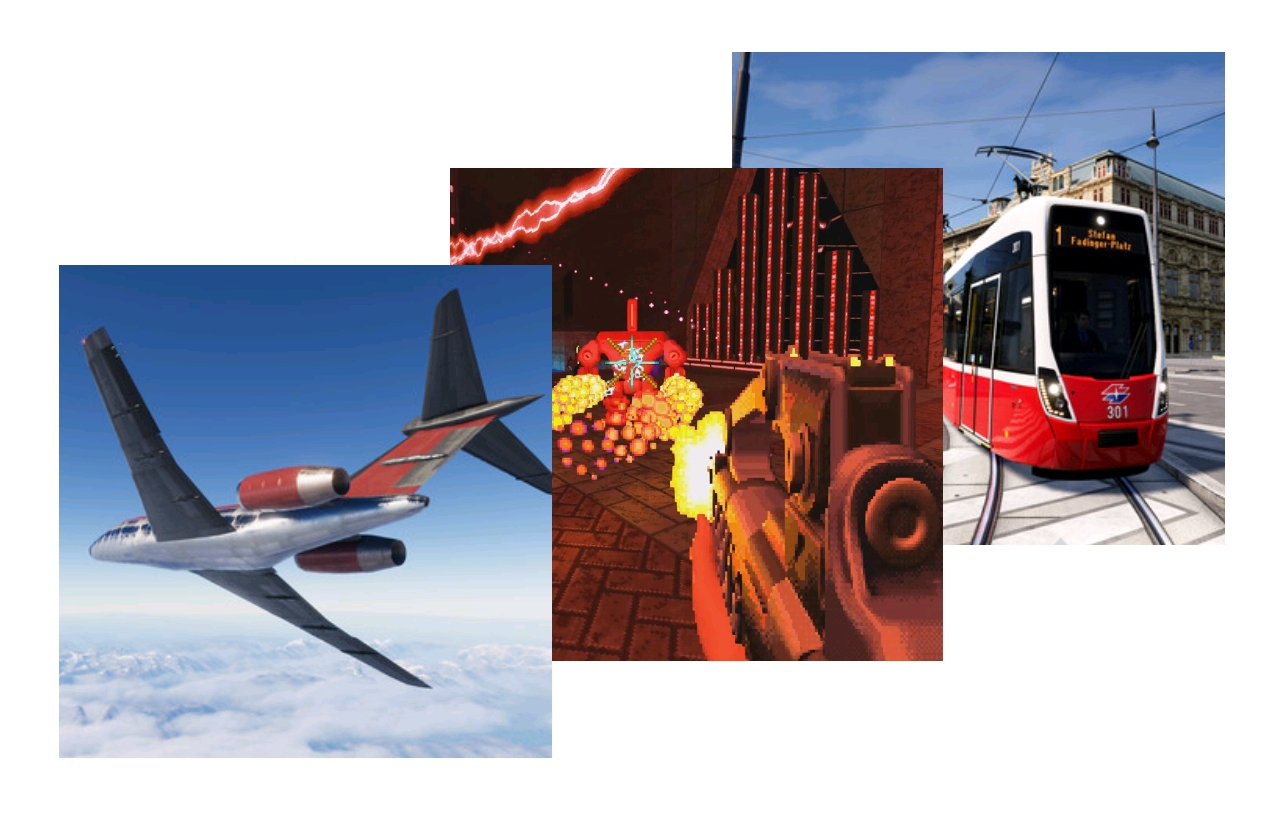
Thank you Tim for going to places I wouldn’t expect – and would never go to on my own either! ^^
Morale +1. Thanks for the words of encouragement, Amiral.